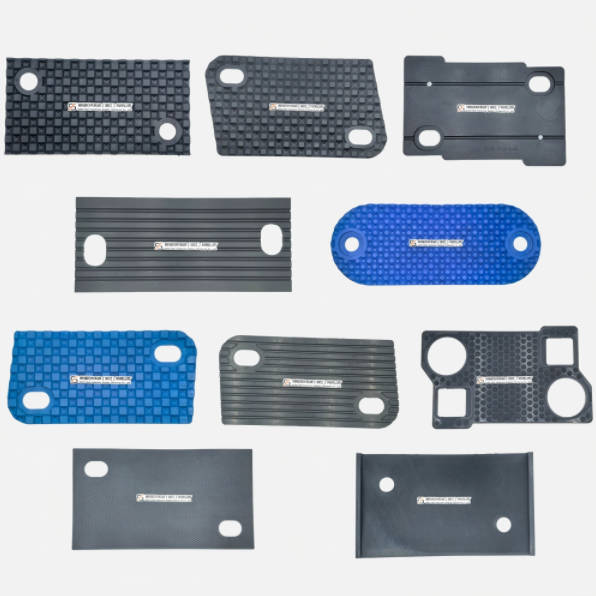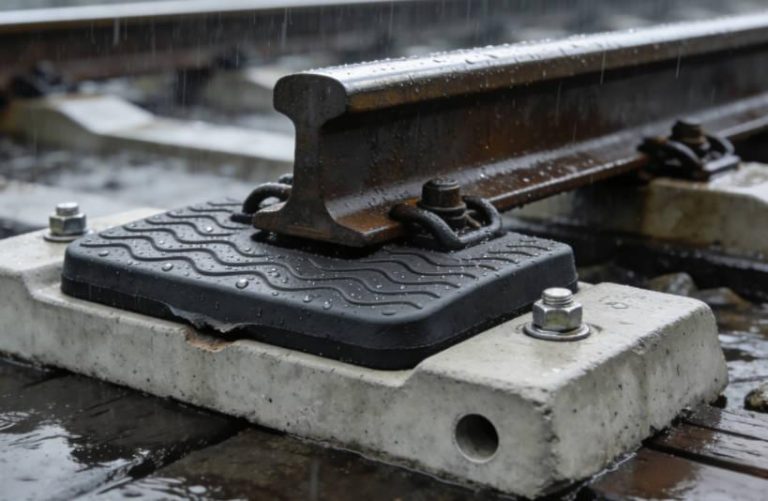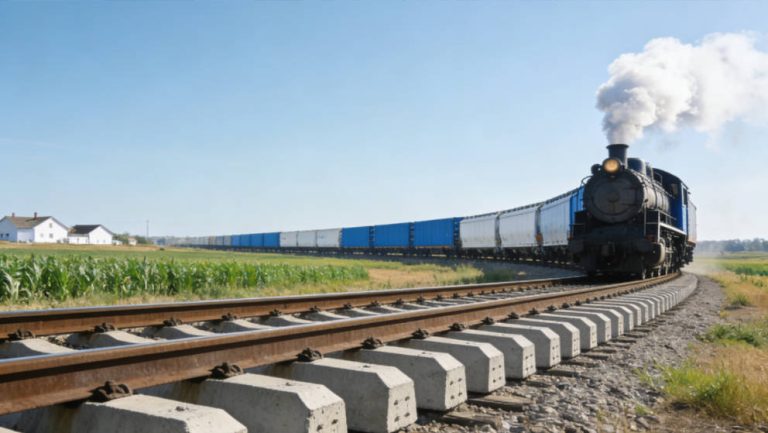Rubber pads play a crucial role in enhancing the durability and functionality of railway systems. As railways continue to evolve with technological advancements, the design and material of rubber pads have become vital in ensuring the longevity of both railway tracks and vehicles. These pads not only serve as a cushion between tracks and sleepers but also greatly influence the overall efficiency and safety of rail transport. Understanding the intrinsic value of rubber pads in the railway infrastructure is essential for professionals in the field who are dedicated to maintaining and improving railway systems.
Understanding the Importance of Rubber Pads in Railway Systems
Rubber pads are integral components in railway systems, designed to absorb vibrations and shocks generated by moving trains. The function of these pads extends beyond mere cushioning; they actively contribute to reducing the wear and tear experienced by tracks and rolling stock. As trains traverse railways, they create significant forces that can lead to track deformation over time. By utilizing high-quality rubber pads, the resilience against these forces is enhanced, resulting in fewer maintenance requirements and prolonged service life of the railway infrastructure.
The Role of Rubber Pads in Absorbing Vibrations
One of the primary functions of rubber pads in railway systems is their ability to absorb vibrations. When a train moves, it produces oscillations and vibrations that can be transmitted to the track and substructure. This transmission may cause fatigue and cracking in the track components. Rubber pads help mitigate these vibrations, providing a dampening effect that enhances the stability of the track. The advanced engineering behind these pads allows them to adapt to various frequencies and amplitudes, ensuring optimal performance under diverse operational conditions.
Enhancing Train Stability through Advanced Rubber Pad Technology
Advanced rubber pad technology has significantly improved train stability. With developments such as optimized material compositions and innovative designs, these pads offer better traction and grip between the rail and the sleeper. This stability is essential for maintaining safe operation speeds and smooth rides. The enhanced grip reduces the risk of derailing, making rail transport safer for passengers and freight alike. Furthermore, the design of these pads can be tailored to fit specific railway applications, ensuring that each system benefits from the most appropriate vibration-damping characteristics.
Customizing Rubber Pads for Different Railway Needs
Customization of rubber pads is critical to meet the varying demands of different railway systems. Factors such as train speed, load capacity, and environmental conditions all influence the requirements for rubber pads. Consequently, manufacturers have begun to develop pads that can be tailored in terms of thickness, hardness, and shape to suit specific operational parameters. This level of customization ensures that each railway system receives the optimal performance from its rubber pads, ultimately contributing to the overall durability and reliability of the railway infrastructure.
SAFE’s Innovative Approach to Rubber Pad Design
SAFE has positioned itself as a leader in the design and manufacturing of rubber pads for railway applications. Established with a commitment to quality, SAFE has evolved alongside the railway industry, offering innovative solutions that address the performance needs of modern rail systems. The company focuses on integrating advanced materials and processes to produce rubber pads that meet national and international standards. With a strong emphasis on research and development, SAFE continuously enhances its product offerings to align with the latest technological advancements in railway maintenance.
Overview of SAFE’s Cutting-Edge Materials and Processes
SAFE employs cutting-edge materials in the production of its rubber pads, ensuring durability and performance durability. The use of high-grade elastomers combined with reinforced compositions allows SAFE rubber pads to effectively withstand the rigors of heavy load and high-speed train operations. Furthermore, SAFE’s manufacturing processes are designed to maintain stringent quality controls and are aligned with standards such as GB/T 21527-2008 and EN 13146-4. This rigorous approach guarantees that each rubber pad meets the necessary criteria for resilience and longevity.
Benefits of Using SAFE Products in Railway Systems
Improved Lifespan of Tracks and Vehicles
One of the most significant benefits of using SAFE rubber pads in railway systems is the improvement in the lifespan of both tracks and vehicles. The advanced material properties of SAFE pads enhance impact absorption, minimizing the degradation of tracks amidst continuous heavy loading. This leads to decreased frequency and costs associated with maintenance and repairs, allowing railway operators to allocate resources more efficiently. Moreover, the extended lifespan of railway components contributes to operational sustainability by reducing waste generated from replacements.
Enhanced Safety and Passenger Comfort
In addition to durability, SAFE rubber pads contribute to enhanced safety and passenger comfort. By effectively absorbing vibrations and reducing noise levels, these pads create a smoother and quieter ride experience for passengers. This factor not only improves overall customer satisfaction but also promotes safer transport conditions by minimizing stress on structural components of the railway system. Furthermore, with increased safety provisions in place, railway operators can ensure compliance with regulatory standards, thereby fostering trust within the transport community.
In conclusion, the integration of high-quality rubber pad designs into railway systems is imperative for ensuring durability, safety, and operational efficiency. SAFE’s innovative approach to rubber pad technology exemplifies the advancements being made in the sector, making it a pivotal player in enhancing the resilience of modern railway infrastructures. As the railway industry continues to evolve, the focus on optimized rubber pads will remain essential to address the challenges faced by railway systems worldwide.
Performance Characteristics of Modern Rubber Pads
Durability and Wear Resistance Features
Rubber pads are engineered to offer high levels of durability and wear resistance, ensuring they endure the demanding conditions present in railway applications. The selection of materials plays a critical role in their lifespan, with advanced elastomers being utilized to enhance longevity. The resilience of these pads against various forms of wear, including abrasion from rail traffic and exposure to changing environments, is vital for maintaining the integrity of railway systems over time. Regular assessments of rubber pads are necessary to monitor their condition, enabling timely interventions that prolong their use and ensure the reliability of rail operations.
Stress Distribution and Load-Bearing Capacity
An essential feature of rubber pads is their ability to distribute stress effectively across the railway infrastructure. By providing a cushioning layer between the rail and the sleeper, rubber pads help to dissipate the forces generated by moving trains. This distribution is particularly important in high-traffic areas, where concentrated loads can lead to premature damage. Furthermore, the load-bearing capacity of these rubber pads is meticulously engineered to match the requirements of specific railway systems, ensuring consistent performance under varying operational loads.
Environmental Adaptability: Temperature and Weather Resilience
Incorporating rubber pads into railway designs requires consideration of environmental factors. Modern rubber pads are crafted to withstand extreme temperature fluctuations and various weather conditions, such as rain, snow, and UV exposure. The material compositions ensure that the pads retain their structural integrity and functional performance regardless of climatic changes. This adaptability minimizes the risk of structural failures and enhances the overall durability of railway systems, making them a reliable choice for operators across different geographic regions.
Installation and Maintenance Best Practices with SAFE’s Rubber Pads
Guidelines for Correct Installation to Maximize Effectiveness
Proper installation of rubber pads is critical for maximizing their effectiveness in railway applications. SAFE emphasizes the importance of following detailed guidelines throughout the installation process, starting with ensuring that the substructure is adequately prepared and free from debris. Utilizing appropriate tools and adhering to specified torque values during fastening can prevent misalignment and premature wear. Additionally, regular inspections post-installation are advised to confirm that all components are securely in place and functioning as intended, thereby extending the lifespan of both the rubber pads and the railway system.
Regular Maintenance Schedules and Procedures for Long-term Use
A well-defined maintenance schedule is key to maximizing the service life of rubber pads in railway applications. SAFE recommends implementing routine inspections to assess the condition of rubber pads and adjacent components. These inspections should focus on identifying signs of wear, compression, or environmental damage that may necessitate replacement or repair. Furthermore, documenting maintenance activities and performance evaluations allows for informed decision-making regarding the allocation of resources for railway upkeep. By prioritizing consistent and thorough maintenance procedures, railway operators can ensure the ongoing effectiveness and durability of their rubber pads and infrastructure.






